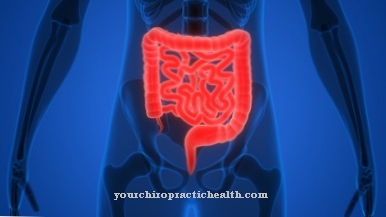creativity We mainly associate it with artistic work, with creative activities such as painting, dancing, singing, drawing, making music, etc. However, creativity is much more than that.
What is the creativity?

The term "creativity" is derived from the Latin verb "creare" (to create, to produce) and stands for the ability to create something new and original and to be creative. Being creative is mostly assigned to the visual and performing arts, which require a high level of creativity.
However, creativity is by no means limited to the fine arts. It's far more complex. From ancient times to the Middle Ages, creativity was seen as a spiritual, God-given, creative force. However, today's definition of creativity encompasses more than innate artistic and human abilities. Rather, she sees in it the ability to develop new contexts of meaning through playful thinking and free association from the existing. Creative processes often run in the subconscious, can suddenly just be present and are often experienced as inner guidance.
Function & task
Creativity is a complex process. If we want to be aware of the function creativity has, it makes sense to look at the lives and skills of creative people. What are creative people? Is there a creative personality?
Most creative people have an ambivalent relationship to routine and fixed habits. It is important for creative people to be able to indulge in daydreams. They are an important key to your creative actions and contrary to popular belief, they are not a waste of time. Research by neuroscientists shows that there are connections between daydreaming and creativity. Creative people have a fine power of observation and are open to new possibilities. They often work according to their own internal time standards.
They often take advantage of being alone and loneliness to be constructive during this time. In life crises, creative people often grow beyond themselves or are confronted with their emotional abysses and process them constructively. The most beautiful love songs, love stories and poems often arise from lovesickness or personal life crises.
Creative people often do not have a fixed worldview and maintain a certain curiosity about other people and life throughout their lives. Writers observe e.g. often their environment and process these observations in their books. Creative people let themselves be guided by their subconscious and have the courage to follow their inner passion and voice. Famous personalities talk about inspirations in their sleep. The famous novel "Dr. Jekyll and Mr. Hyde" by Robert Louis Stevenson originated from a dream of the author, in which one person was transformed into another. Musician Paul McCartney woke up with the tune of "Yesterday" in his head.
In general, however, there are no categories of creative and uncreative people. All have the ability to be creative and whether this emerges strongly depends on whether people are given the opportunity to develop creatively, whether they can have experiences that promote creativity.
Creativity is also present in the most varied of life situations and not just in artistic activities. The creation of new contexts and thus a kind of creative power characterize the imagination, which is ultimately brought to life creatively in the implementation. These can be inventions, crafts, art, etc.
You can find your medication here
➔ Medicines against memory disorders and forgetfulnessIllnesses & ailments
It is precisely the sensitivity and openness of the senses that characterize creative people that can also be their undoing. The life stories of famous personalities show how close genius and madness are often to one another and how fluid the boundaries between creativity and mental illness can be. The composer Robert Schumann was often melancholy, tried to kill himself and spent a long time in psychiatry. Vincent van Gogh is known to have cut off his ear during one of his delusions from which he suffered repeatedly. It is not clear which illness he suffered from, but he had to undergo psychiatric treatment several times. Ernest Hemingway had to struggle with alcohol addiction, mental problems and depression repeatedly in his life. He committed suicide at the age of 61. Franz Kafka suffered from the monotony of modern working life, from anorexia and depersonalization.Various young and talented artists of the past few decades have died from excessive drug or alcohol consumption, as the fates of young artists such as Jim Morrison, Jimi Hendrix, Janis Joplin, Kurt Cobain, Michael Jackson and Amy Winehouse show. They were all creative and talented, but could not find sufficient support in their lives, sometimes suffering from severe mood swings, which they fought with drugs and alcohol.
The boundaries between art and illness are often fluid and creative people are particularly at risk of developing mental illnesses or disorders, precisely because of their sensitivity and susceptibility. A recent Swedish study shows that creative people are more likely to suffer from mental illness or bipolar disorder. Writers are more at risk than dancers, photographers and researchers. In general, however, there is no general connection between creativity and mental illness.













.jpg)

.jpg)
.jpg)











.jpg)